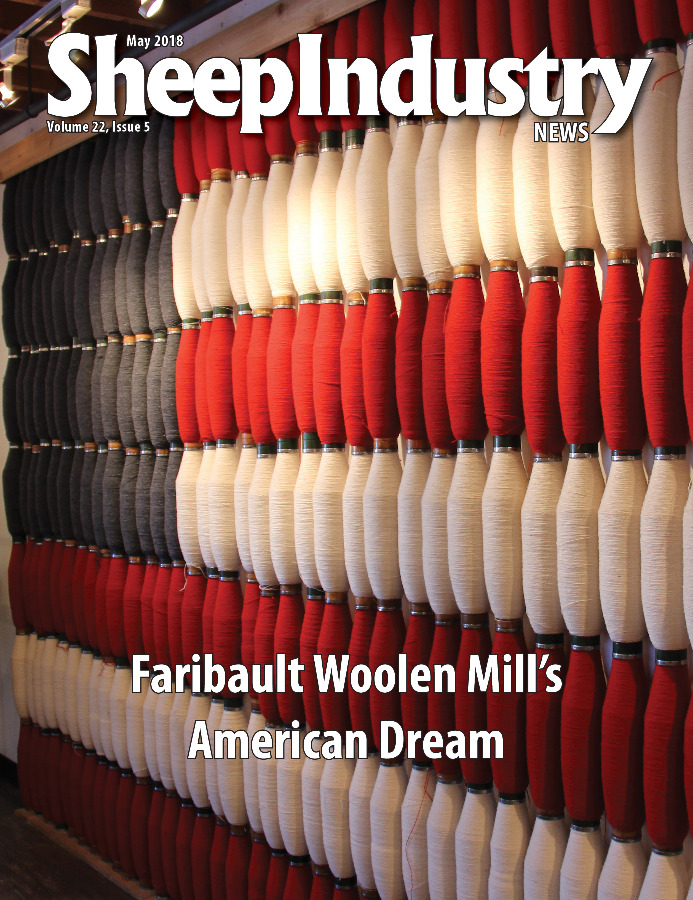Let’s Grow Update: GM1 Sheep Production for Huntington’s Disease
OBJECTIVE: To spread awareness of the GM1 project to sheep producers, along with awareness of debilitating neurologic disease – specifically Huntington’s Disease, which is a fatal progressive genetic neurological disease. The success of the GM1 for HD project relied solely on the ability of the American sheep industry to respond to demand for GM1 ganglioside affected lambs in large numbers once the GM1 molecule has been approved for use in treating human neurologic diseases. Grassroots outreach efforts – primarily through the production of video resources and social media were used to mobilize the industry one producer at a time.
A safe, plentiful source of GM1 ganglioside for therapeutic use for clinical trials in Huntington’s Disease is needed. Prior development in the field was based on GM1 production from bovine brain collected at slaughter plants throughout Europe. In the 1990s, clinical trials were in progress for spinal cord injury and Parkinson’s disease when Mad Cow Disease – also known as BSE – was diagnosed in cattle in England.
With the discovery of BSE, raw material from non-source verified animals of any species could not be reliably used for ganglioside production for pharmaceutical use, and GM1 ganglioside cannot be practically synthesized.
GlycoScience Research Inc., has developed a unique genetic line of sheep that has been deemed an acceptable raw material source for GM1 ganglioside production for pharmaceutical use in a recent pre-investigational new drug review by the Food and Drug Administration. While these sheep represent the only avenue for GM1 ganglioside production, the pharmaceutical industry, venture capitalists and many in the National Institutes of Health are skeptical of the sheep industry’s ability to meet demand for GM1 ganglioside.
Let’s Grow Program funds were used to produce a series of educational and outreach videos which were widely distributed via YouTube and social media, and regionally via flash drive content. The video presentations were designed as a series of short videos which can be viewed individually, but together present the complete history and vision of the GM1 project and emphasize the urgent need to proceed with GM1 federal approvals in order to assist Huntington’s Disease patients and their families. Sound bites of certain video segments were edited to be released as short, powerful statements in social media communications on the project and/or news outlets. Let’s Grow Program funding support was acknowledged in each video.
Footage which was collected during the project but not used in the current videos can be combined at some point in the future – given additional funding – into a longer film documenting the GSR journey from concept to commercialization of the GM1 product.
The successful project resulted in seven new educational videos and 17 edited sound bites for social media use. The Let’s Grow Program-funded project provided travel and production expenses for Nicole Richmond to conduct on-site interviews with Susan and Larry Holler of GlycoScience Research, participating sheep producers and HD families who desperately need a treatment. Dr. Larry Holler’s presentation, The Shepherd’s Gift: GM1 for HD presented at the Michigan Sheep Breeders Association annual meeting in January 2016 was also recorded in its entirety by the Michigan Farm News and the Michigan Farm Bureau.
Additional videos and video footage from other sources were added to the flash drives and to the YouTube library. These completed the educational video portfolio highlighting the need for GM1 in the fight against HD and included video by the Michigan Farm Bureau of Dr. Heather and Mike Ludlam.
The Hollers traveled to Indiana in April 2017 to accept a monetary award from The Bev Hartig Huntington’s Disease Foundation. Bill Crawford of Harbor Pictures recorded interviews with Bev and her husband Bob, and Larry and Susan Holler prior to the TBHHDF fundraiser. Additionally, Bill interviewed Gary Dunbar, Ph.D., a GM1 researcher at Central Michigan University with whom Larry Holler made contact with during spring of 2017. These three interviews are some of the most powerful and compelling captured for this project.
The video presentation, along with additional paper documentation on the GM1 project, has been distributed on USB flash drives to all participating GM1 cooperators, as well as selected interested entities regionally. Since the project is currently awaiting generation of supporting data for clinical trials, and funding for these trials, a decision was made to postpone distribution of the education and outreach videos to sheep and wool producer groups until a time when the project can take on and support more sheep producers.


